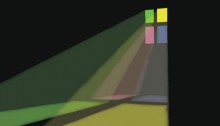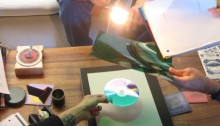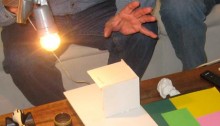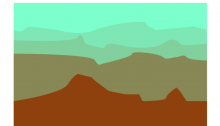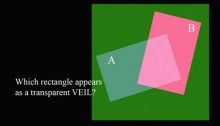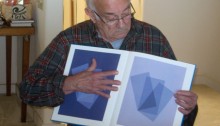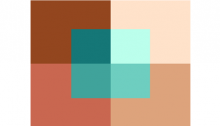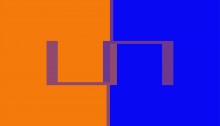Color Relationships 2, 2015 week 6
The sixth and final session of the Color Relationships class for Winter 2015 was held on Friday, February 13. We analyzed a photo with colored shadows, and critiqued the colored light and shade homework assignments. A quiz provided a review of course concepts. Dick gave an introduction to his upcoming art history class.
